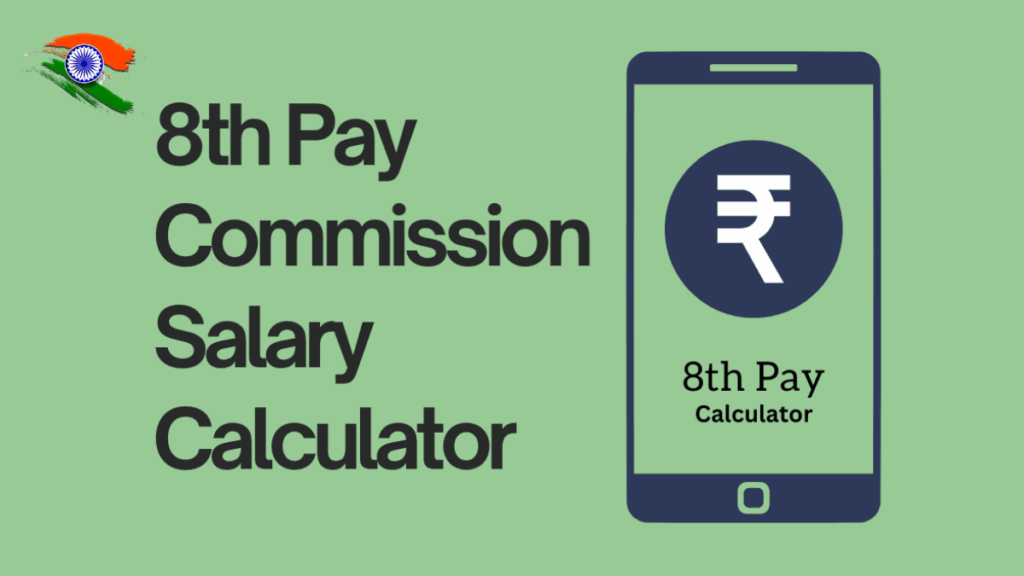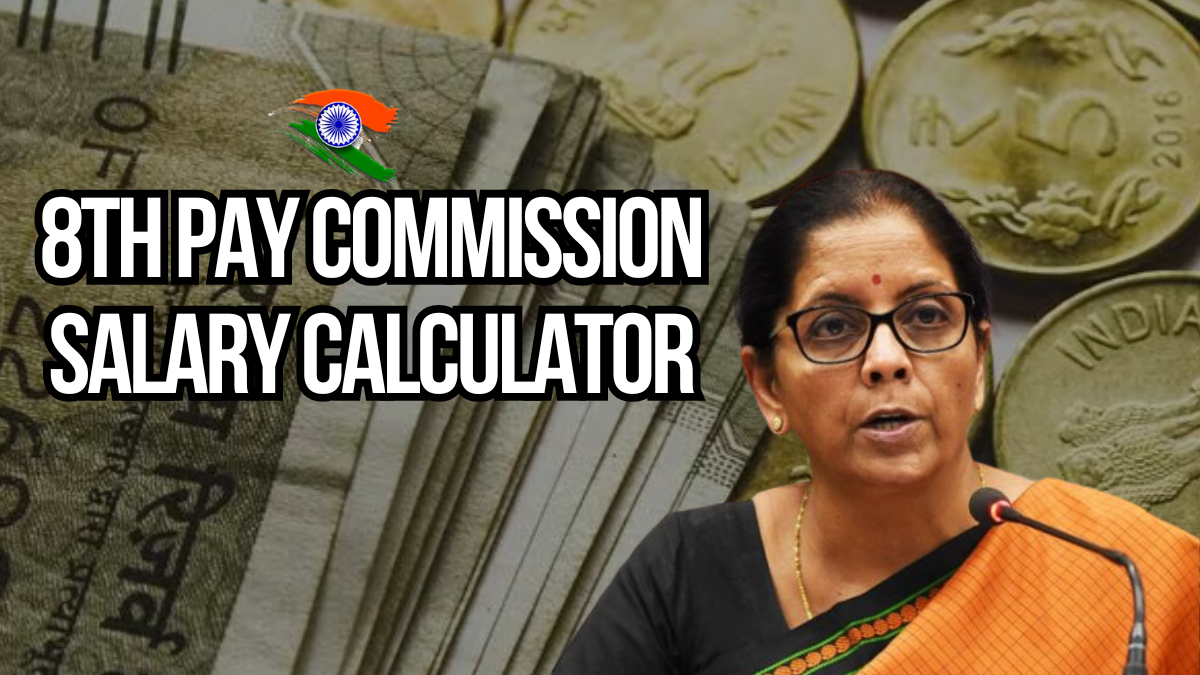Central government employees across India eagerly await the implementation of the 8th Pay Commission, a comprehensive salary revision that could transform their financial landscape. This anticipated change promises significant increases in basic pay, allowances, and overall compensation packages for millions of government workers.
The 8th Pay Commission represents more than routine salary adjustments, it’s a complete restructuring of government compensation that could nearly double take-home pay for many employees. Early projections suggest substantial improvements across all pay levels, with some estimates showing basic salaries increasing by 80-150% depending on the final fitment factor adopted.

Government employees have good reason for optimism. Historical patterns from previous pay commissions demonstrate consistent salary improvements, with each revision addressing inflation, cost of living increases, and competitive positioning relative to private sector compensation. The 7th Pay Commission increased minimum salary from ₹7,000 to ₹18,000, and similar substantial growth is expected from its successor.
The Foundation: Understanding Fitment Factors
The fitment factor serves as the cornerstone of every pay commission revision. This multiplier determines how much basic salaries increase when transitioning between pay structures. For the 8th Pay Commission, various estimates suggest fitment factors ranging from 1.86 to 3.5.
Historical fitment factors provide valuable context for these projections. The 6th Pay Commission used 2.57, while the 7th Pay Commission implemented 2.86. The 8th Pay Commission is expected to use a factor somewhere between 1.86 (conservative estimate) and 3.5 (optimistic projection), with most experts predicting something around 3.0.
How Fitment Factors Transform Salaries
A Level-3 employee currently earning ₹21,700 in basic pay could see dramatically different outcomes depending on the final fitment factor:
Conservative Scenario (1.86 factor):
- New Basic Pay: ₹40,362
- Percentage increase: 86%
Moderate Scenario (2.57 factor):
- New Basic Pay: ₹55,769
- Percentage increase: 157%
Optimistic Scenario (3.0 factor):
- New Basic Pay: ₹65,100
- Percentage increase: 200%
These calculations demonstrate how seemingly small changes in the fitment factor translate into substantial financial differences for employees.
Complete Salary Structure Under 8th Pay Commission
Breaking Down the New Compensation Package
Using a moderate fitment factor of 2.57 for a Level-3 employee earning ₹21,700:
Current 7th Pay Commission Structure:
- Basic Pay: ₹21,700
- House Rent Allowance: ₹6,510 (30% for metro cities)
- Travel Allowance: ₹3,600
- Current Gross: ₹31,810
Projected 8th Pay Commission Structure:
- New Basic Pay: ₹55,769
- House Rent Allowance: ₹13,385 (24% of revised basic)
- Travel Allowance: ₹5,500 (estimated increase)
- Projected Gross: ₹74,654
After Standard Deductions:
- National Pension System (10%): ₹5,577
- Central Government Health Scheme: ₹250
- Net Take-Home Salary: ₹68,827
This represents more than double the current net salary, providing government employees with significantly enhanced purchasing power.

Understanding the Dearness Allowance Reset
One concern among government employees involves the Dearness Allowance reset under the new pay structure. Currently, many employees receive substantial DA benefits that effectively increase their monthly income.
The 8th Pay Commission will reset DA to zero, but this doesn’t mean employees lose these benefits. Instead, existing DA gets absorbed into the new basic pay calculation through the fitment factor. This approach prevents double-counting while ensuring employees don’t lose existing benefits.
Starting from zero DA under the new structure provides a clean foundation for future increases. As inflation rises, new DA will apply to the much higher basic pay amount, potentially resulting in larger absolute increases than current DA provides.
Salary Projections Across Pay Levels
Entry-Level Positions (Levels 1-5)
Pay Level |
Current Basic |
Projected Basic (2.57x) |
Estimated Net Salary |
|---|---|---|---|
Level 1 |
₹18,000 |
₹46,260 |
₹58,000-62,000 |
Level 2 |
₹19,900 |
₹51,143 |
₹64,000-68,000 |
Level 3 |
₹21,700 |
₹55,769 |
₹69,000-74,000 |
Level 4 |
₹25,500 |
₹65,535 |
₹81,000-87,000 |
Level 5 |
₹29,200 |
₹75,044 |
₹93,000-100,000 |
Senior Positions (Levels 14-18)
Higher-level employees stand to gain even more dramatically. A Level 18 employee currently earning ₹2,50,000 could see their basic salary reach ₹6,42,500 with a 2.57 fitment factor an increase of ₹3,92,500 monthly.
These substantial increases reflect the multiplicative effect of fitment factors on higher base salaries. Senior employees will see both percentage and absolute increases that far exceed lower-level positions.
Allowances and Benefits Under the New Structure
House Rent Allowance Adjustments
HRA calculations will likely change under the 8th Pay Commission. Current speculation suggests HRA percentages might decrease from 30%/20%/10% to 24%/16%/8% for X/Y/Z category cities respectively.
However, even with reduced percentages, employees will likely receive higher absolute HRA amounts due to increased basic pay:
Metro Cities (X Category):
- Current: 30% of ₹21,700 = ₹6,510
- Projected: 24% of ₹55,769 = ₹13,385
- Net increase: ₹6,875
Travel Allowance and Other Benefits
Travel Allowance typically increases proportionally with basic pay revisions. Current estimates suggest TA could increase from ₹3,600 to approximately ₹5,500 monthly for most employees.
Other allowances including medical benefits, leave travel concessions, and special duty allowances will also see proportional increases based on the new pay matrix.
Implementation Timeline and Expectations
Historical Implementation Patterns
Previous pay commissions suggest implementation timelines of 18-24 months from official announcement to full rollout. This period covers:
- Government approval and notification
- System updates and administrative changes
- Salary calculation adjustments
- Arrears processing and payment
Arrears and Retroactive Benefits
Once implemented, employees typically receive arrears covering the gap between announcement and implementation. These lump-sum payments can provide substantial short-term financial benefits.
For example, if implementation occurs 18 months after the effective date, a Level-3 employee could receive arrears of approximately ₹6-8 lakhs, depending on the final salary increase.
Financial Planning for the Transition
Preparing for Higher Income
Government employees should prepare for potential salary increases by:
Budget Planning:
- Review current expenses and financial commitments
- Plan for increased tax obligations on higher salaries
- Consider investment opportunities with additional income
Managing Implementation Delays:
- Maintain realistic expectations about timelines
- Budget for potential delays in government approval
- Prepare for arrears management when implementation occurs
Long-term Benefits and Considerations
The 8th Pay Commission’s effects extend beyond immediate salary increases:
Pension Implications:
- Higher basic pay increases pension calculations for future retirees
- Current pensioners may benefit from revised pension structures
Career Development:
- Improved compensation makes government positions more attractive
- Enhanced job satisfaction and retention rates likely
Potential Challenges and Considerations
Government Fiscal Capacity
The final fitment factor depends heavily on government fiscal capacity and economic conditions. Factors influencing the decision include:
- Current budget allocations and constraints
- Economic growth projections and inflation rates
- Comparative analysis with private sector compensation
State Government Implications
While the 8th Pay Commission primarily affects central government employees, state governments often adopt similar structures. However, implementation timelines and exact benefits may vary based on individual state fiscal conditions.
Maximizing Benefits from the 8th Pay Commission
Investment and Savings Strategies
The salary increases provide opportunities for enhanced financial planning:
Immediate Actions:
- Increase systematic investment plan contributions
- Consider home loan prepayments with higher disposable income
- Enhance insurance coverage based on increased income
Long-term Planning:
- Evaluate retirement corpus targets based on new salary levels
- Consider property investments with improved financial capacity
- Plan children’s education funding with increased resources
Tax Planning Considerations
Higher salaries require updated tax planning strategies:
- Review and optimize tax-saving investments
- Consider tax-efficient investment options
- Plan for potential bracket changes with increased income
Your Financial Future Starts Now
The 8th Pay Commission represents a transformative opportunity for government employees to significantly improve their financial situations. While exact figures depend on final government approval and implementation, projections suggest meaningful increases across all pay levels.
The mathematical possibilities are encouraging. Even conservative estimates show substantial improvements in take-home pay, providing opportunities for better financial planning, increased savings, and enhanced quality of life.
Preparation remains key to maximizing these benefits. Government employees should use this anticipatory period to understand proposed changes, plan their finances accordingly, and prepare for enhanced compensation structures.
Smart financial planning combined with realistic expectations about implementation timelines will help employees capitalize fully on these improvements when the 8th Pay Commission finally takes effect.
FAQs on the 8th Pay Commission
Q. What is the 8th Pay Commission?
A. The 8th Pay Commission is an upcoming governmental initiative in India aimed at revising the pay structure of central government employees and pensioners. It is expected to build upon the recommendations of the 7th Pay Commission to ensure fair salaries in line with inflation and economic growth.
Q. When will the 8th Pay Commission be implemented?
A. While there is no official date for its implementation yet, experts speculate that discussions and frameworks for the 8th Pay Commission might begin around 2025, based on historical timelines.
Q. Who will benefit from the 8th Pay Commission?
A. The 8th Pay Commission will primarily benefit central government employees, pensioners, and potentially state government employees, depending on whether state governments choose to adopt its recommendations.
Q. How will the 8th Pay Commission affect salaries?
A. The 8th Pay Commission is expected to propose higher salary structures, revised allowances, and updated pay scales that account for inflation and economic changes over time. The exact increase will depend on the recommendations made and their subsequent approval.
Q. What changes are expected in allowances with the 8th Pay Commission?
A. While it is too early to confirm specific changes, allowances such as House Rent Allowance (HRA), Dearness Allowance (DA), and Travel Allowance (TA) are likely to be updated in line with revised salary structures.
Q. How can employees prepare for the 8th Pay Commission?
A. Employees can start by reviewing their current financial plans, understanding the likely changes in pay and allowances, and consulting financial advisors to align their long-term goals with anticipated salary revisions.
For More Information Click HERE
